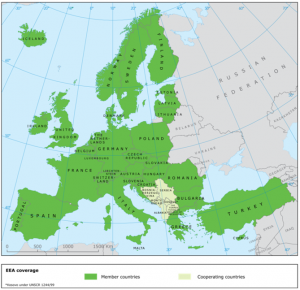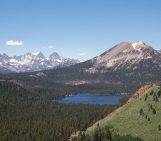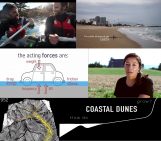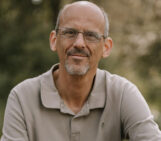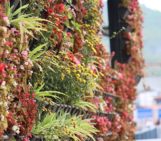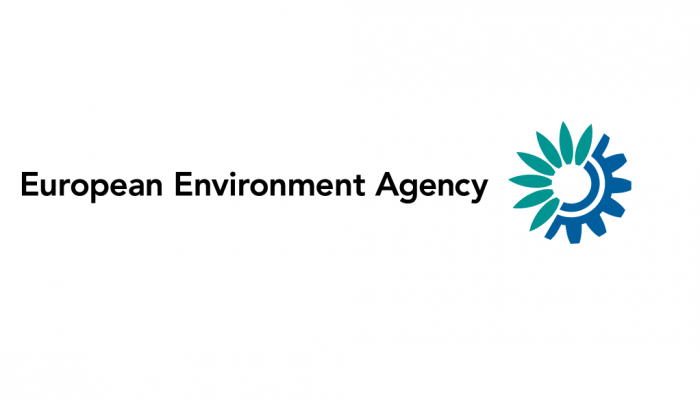
This blog post features an interview with Petra Fagerholm who is currently leading the team on public relations and outreach in the communications department of the European Environment Agency (EEA). Petra gave a presentation about the EEA during the Science for Policy short course at the 2018 EGU General Assembly. In this interview, Petra describes her career path, what it is like to work at the EEA and provides some tips to scientists who are interested in a career in an EU institution or who would like to share their research with policymakers.
Could you start by introducing yourself and the European Environment Agency (EEA)
My name is Petra Fagerholm, I have worked at the European Environment Agency (EEA) in Copenhagen for 14 years. Currently, I am leading the team on public relations and outreach in the Communications department.
The EEA is an EU agency, which was set up in 1993 to inform the policymakers and the citizens about the status of the environment and to contribute to sustainable development. In addition to the headquarters, a ministerial level expert network across Europe was also established. This network is called “Eionet” and it ensures dataflows for reporting and quality consistency of the assessments we produce.
How does the EEA use science and research?
Experts at the EEA use science and research material when producing reports, briefings and assessments. The EEA translates science into tailor-made knowledge needed for policymaking at a European level.
How did you become the Head of Group for Public Relations and Outreach at the EEA?
I studied Biology at the University of Helsinki, in Finland, where I come from. My University pathway was far away from communication and environment. After a year of exchange at the University of Neuchâtel, Switzerland, I became really interested in human physiology and subsequently I graduated a couple of years later from the University of Strasbourg with a French DEA degree in Neurosciences. I was part of the research group on visual psychophysics when Finland became a member in the EU. Finnish politicians were hiring assistants and out of curiosity (and being young… and fearless…), I applied and got the job. I think the drive for change came from the fact that I felt my research topics and hypothesis were very difficult to solve and funding was hard to get in the area of fundamental life sciences research. I aspired to be part of the new “European Project” for Finland.
After my job at the European Parliament, I was lucky to be recruited on a short-term contract at the European Commission as Scientific Officer in the area of Neurosciences. After a break of 1 year during which I was pregnant with my daughter, I worked for 2 years at Merrill Lynch Investment Bank in London. During that period, I came across the announcement for recruiting new staff at the EEA.
At the EEA, I started at the Executive Director’s office working on strategic coordination and on several short-term projects in the field of sustainability. I have always been keen to lead and support others in their career. I lead the support team in that office for 8 years. After 11 years in total in the director’s office, I was ready to change career and was lucky to be transferred to the communications department. My new tasks were to develop stakeholder approaches to support the communication framework at the EEA and continue to lead the team of outreach.
My career path is far from a straight line. I have more often let my heart lead rather than my head on career decisions. People I have met over the years, or more precisely bosses I have had, have helped by always giving me a sense of freedom in my tasks, trusting and believing in me. I have avoided staying in a job where I did not feel my skills were valued.
What is your average day like in the EEA office?
An average day is when I interact across the organisation with experts seeking their input or advice into a stakeholder project I am doing. It can be either enquiring about stakeholder consultations of a report published or developing a programme for a visiting group coming to the EEA. I catch up with everyone in my team on a daily basis to sense if everything is ok. My boss is easily approachable and I speak to her every day.
Twice a month I organise a strategic communication meeting for the Communication colleagues where we share information on production, launches, press, speeches and project across the EEA. Sometimes I receive a visiting group from a university or a ministry. People from across the world contact us to ask for a visit. Usually I kick off the programme by giving a presentation about the EEA after which I am joined by a couple of experts on a specific topic that the visitors are interested in.
What do you enjoy most about your job?
I like to lead a team and see how the members complement each other’s competences. Allowing each team member to use their full potential and develop new skills is rewarding to me.
Working in a European body and for the environment feels good. I believe the EU is the biggest peace project in the world.
What do you find most challenging about your job?
I find it challenging when it is difficult to measure the real and tangible impact of outreach or communication. It is also sometimes difficult to prioritise activities and to work within the limited resources we have available.
Sometimes we cannot avoid influences from geopolitical storms – it is hard. Europe is about working together and building bridges for everyone.
What advice would you give to a researcher who is interested in a career with the EEA or the EU more broadly?
- Firstly, you have to be an EU national to apply to the EU institutions. At the EEA, we have 33-member countries and you have to be citizen of one of these.
- If you see an interesting job advertised in the EU institutions or EEA, apply as many times as you want.
- Do not give up.
- Keep your CV updated.
- Follow EU politics.
- Read up on EU affairs – it will make a difference in the interview.
- Apply for jobs in national ministries or institutions – it can sometimes be a gateway to finding a short-term contract as a seconded national expert in the EU or at EEA. Look for a job in an EU lobby organisation who could benefit from your specific research.
- Apply for the EU Blue Book traineeships https://ec.europa.eu/stages/
- Register to EPSO – the EU portal for jobs: https://epso.europa.eu/apply/job-offers_en
Do you have any advice for scientists wanting to communicate their research with policymakers?
Less is more. Policymakers will find your research useful if you have concrete examples on how to contribute or solve some of the challenges a policymaker faces.
Use easily understandable language in your communication material. One A4 page is a good length for anything.
Is there anything else you’d like to say or comment on?
Surround yourself every day with people who are positive and who give you energy and pull you up. Believe in yourself and in your passion for what you do. Be proud of the choices you have made and trust in those you will make. There is a reason for everything.
Editor’s Note: since this interview took place, Petra has changed positions within the European Environment Agency and is currently working as a stakeholder relations expert

